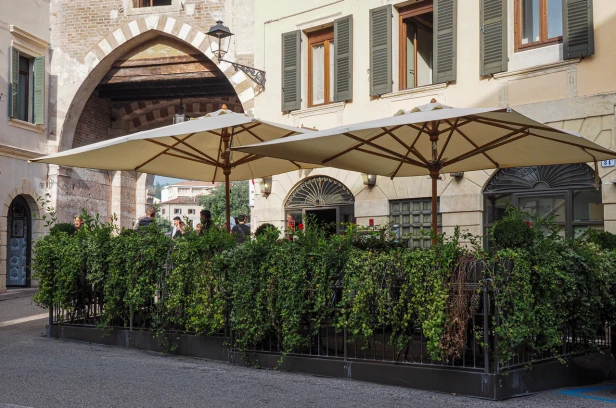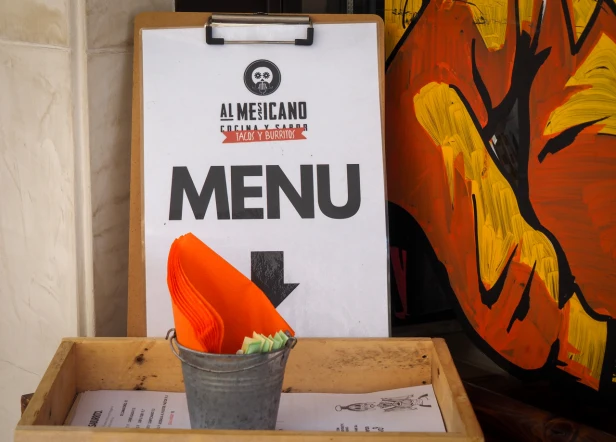Where not to eat in Italy

Planning a trip to Italy? Then you need to read this to avoid common mistakes chosing where to eat.
Among all those exciting reasons to make Italy your next travel destination, there is without any doubt the long list of delicious foods this country is famous for.
It is one of the reasons I keep returning, and without exaggeration I can say that I had some of the best meals of my life in Italy.
But as someone who has lived for nearly 10 years in Italy, and regularly visits for work and leisure, let me tell you this.
Despite Italy’s well-deserved reputation for excellent food, it is possible to eat badly there too.
Though this should not come as a surprise as you find both excellent and awful restaurants anywhere in the world, sadly the number of places offering mediocre, low quality, and industrially produced food seem to have skyrocketed in the land where you would expect exactly the opposite to be true.
Especially in popular tourist areas there is nowadays a high risk to end up disappointed with your food.
To make things worse, following the simply rule to go where the locals go is no longer guaranteeing quality either. Unfortunately, even Italians have become less critical about food, turning to fast food and international chain restaurants.
Even more sadly, this is no longer just happening in large cities with huge visitor numbers. Even in lesser-known smaller towns and villages with modest visitor numbers, more and more of the traditional small restaurants which used to be family owned and managed, serving seasonal local food lovingly prepared on-site, are disappearing. They are substituted by larger brands or purchased by large corporates running the place with staff less invested in service and quality.
Case in point: I’ve just returned from a trip to Veneto, in northern Italy. There, I went to a small town I’ve visited often in the past and each time I went to an excellent gelateria nestled on the lovely historic town square. This time, the gelateria was gone and replaced by a small bar. Do they also serve ice cream I asked? Well, they did. Fabric made packaged ice cream (you know, those well-known international brands that are certainly not bad, but still light years away from an authentic hand-made Italian ice cream). To say I was disappointed does not nearly come close to the state of mind I was in that moment.
Travelling to Italy, delving into the delicious Italian cuisine, enjoying fantastic food accompanied by a glass (or more) of excellent Italian wine is certainly one of the top priorities you have. So, ending up at a place serving food that remains well below your expectations is the last thing you want to happen.
Thankfully, there are ways to reduce the risk this happens. Check out the do’s and don’ts when looking for places to eat in Italy I have assembled for you below.
The Do’s and Don’ts looking for a place to eat in Italy.
If you are looking for outstanding food experiences visiting Italy, thankfully there are still plenty of excellent places serving authentic, seasonal Italian dishes. To avoid disappointments, though, look out for the signs whether a place offers the desired quality or not.
Do: What to look for if you want to eat authentic quality food in Italy
Ask for recommendations at your hotel. People in the hospitality sector are highly knowledgeable about the places serving the best, authentic Italian food and they will happily share their knowledge.
For your daily fix of delicious Italian gelato, make sure to buy at places advertising produzione propria (in-house production) and artigianale (handmade). Avoid the gelaterie (ice cream shops) close to tourist attractions, who typically sell fabric-made ice cream at astronomic prices. Though, exceptions of this rule exist.
In larger cities, join a food tour. You will not only get a fantastic introduction to local specialities, and sometime learn how they are made, you are likewise treated to sample small bits of traditional local food. And you can always return for a proper dinner to the places you liked most during the tour.
Consult established food guides and reviews and look out for places displaying member signs. Guides like Italian Gambero Rosso, a food and wine guide, or Slow Food Osterie d’Italia are usually good pointers. In addition, look out for member signs indicating a restaurant belongs to quality associations. For Italy, that would include Gambero Rosso and Slow Food again, but also international associations like Guide Michelin and JRE-Jeunes Restaurateurs.

Look for restaurants away from tourist spots and quiter neighbourhoods. Though this is no longer guaranteed, but stepping away from the tourist hotspots and carefully consulting the menu, you can still find great places to eat.
Check out local food bloggers. Local culinary experts who live in the place, are fantastic sources to find hidden places, new openings, excellent street food, where to find the best cocktails for aperitivo hour, and frequenting those places themselves, can offer great advice what dishes to try.
Familiarize yourself with typical seasonal Italian food. To determine if a menu offers authentic quality food, you need to know what to look for. Italy has a very diverse, regionally based cuisine. So, make sure to familiarize yourself with the specialities typical to a certain city or region. Because the well-known classic Italian dishes you know from abroad do not exist in all Italian regions. And some local specialities will be exclusively served in a particular city or defined region. For example, you will rarely find a risotto alla Milanese outside of Lombardy, the bistecca alla Fiorentina is served in Florence and Tuscany, and pasta alle sarde in Sicily.
Don’t: What to avoid if you don’t want to eat badly in Italy
Avoid eating in or close to popular tourist areas. Restaurants located close to popular tourist spots usually focus on tourists passing by. As most of their guests will not return, their focus lies on maximising the number of dishes they turn out rather than offering service and quality that will turn visitors into frequent guests.
Do not eat at restaurants displaying dishes on photo boards in various languages. These restaurants are there to cater to tourists in the first place. Authentic Italian restaurants, serving freshly prepared dishes will not relay on photos. Or food displayed outside the restaurant, either real or plastic examples of the dishes they serve. It’s a trap. Avoid it. Keep walking.
Do not go to restaurants that display huge menus. Many authentic Italian restaurants will not display a menu at all, especially the smaller ones. However, some do and the fact they will does not mean these places are tourist traps. The crucial point indicating you should avoid the place is the length of the menu. Authentic Italian restaurants usually serve few seasonal dishes.
Avoid the places that put people outside urging you to come in. While it’s common in Italy for guests waiting to be seated, and most Italian restaurants will have staff outside or by the entrance to welcome you and escort you to your table, a quality restaurant will not pester people to enter.
Avoid restaurants with all-day opening hours or opening very early for dinner. Italians tend to eat dinner late. Therefore, restaurants are usually not opening before 7.30 to 8pm. If opening hours start much earlier, or a restaurant is open from mid-morning into the evening, this is a sign that their focus is on tourists.
Do not buy food at sandwich or pizza kiosks: You can find those in nearly all tourist areas, nestled along the main shopping streets and pedestrian areas. I am talking about shops selling sandwiches and slices of pizza over the counter. These places are there for tourists, and they are run by large corporates. While the sandwiches and slices of pizza can be OK, you are light years away from an authentic Italian food experience. Plus, the money you spend will not remain in the local community, it will go to a large organization maximizing profits and minimizing costs.
Avoid places that give themselves foreign names. Looking to stop for a coffee (by which I mean all the typical local variations including espresso, cappuccino, and the like)? Then avoid places that give themselves foreign names. A place called coffee bar is there to attract tourists, not locals. Some of the coffee they serve might be all right, but service is often not interested and sandwiches and snacks which are part of the typical bar experience will be mass-produced.
Likewise, avoid places that serve internationalized ‘Italian’ food. Here is a hard truth. Many Italian restaurants outside of Italy serve food that might sound Italian, but no authentic Italian restaurant in Italy would ever put on their menu. Pizza Hawaii, pasta with meatballs, and the like are not Italian dishes.

Avoid places selling international-style fast food. Believe it or not but the largest global fast-food chains are present in Italy. Selling the same burgers and sandwiches like everywhere else in the world. You don’t want to eat there while in Italy, right? Likewise, avoid places that advertise other typical international fast-food.
So, before your next trip to Italy, familiarize yourself with the do’s and don’ts when looking for authentic Italian food. It’s worth it because you don’t want to return with memories of eating badly, don’t you?